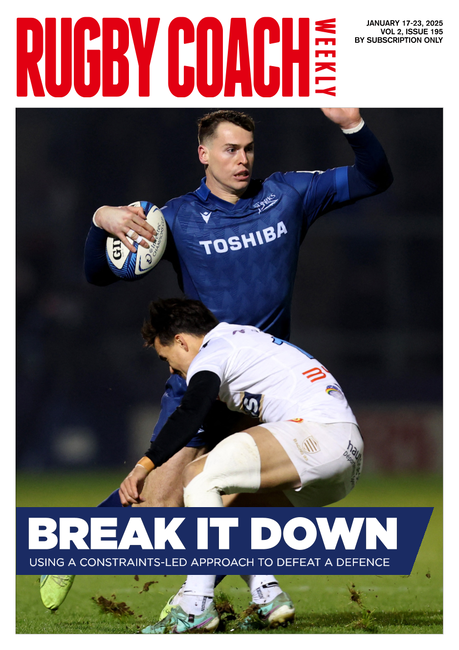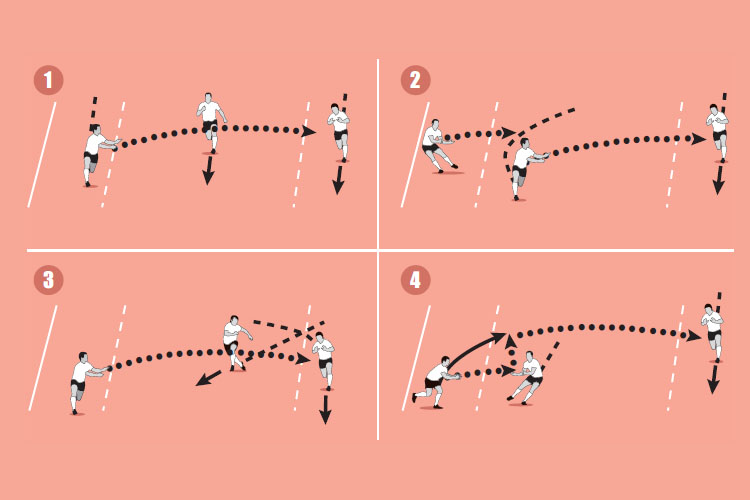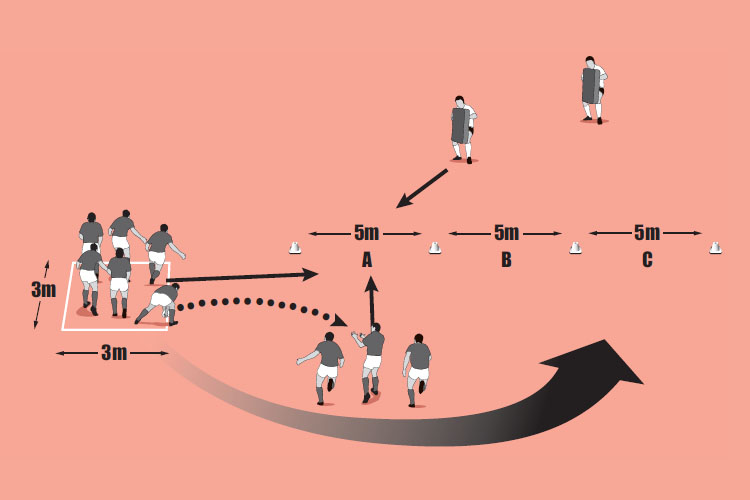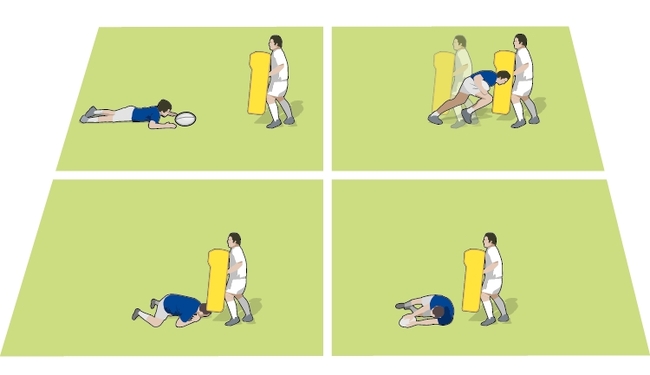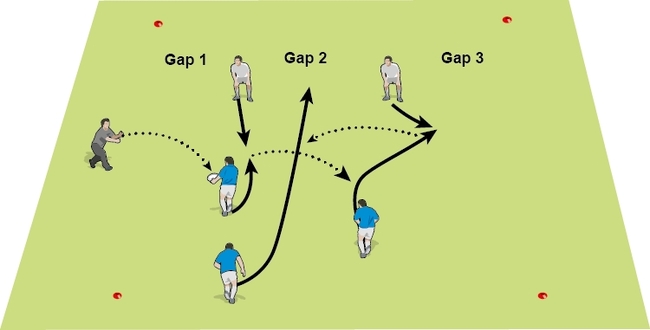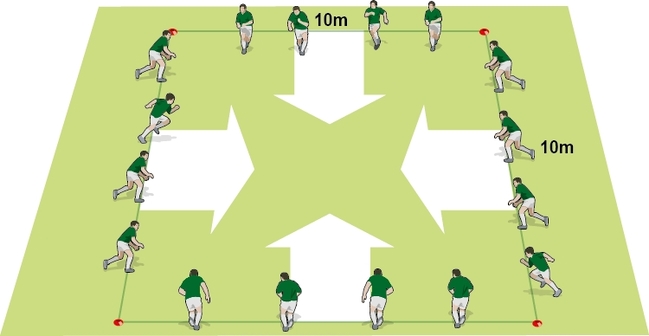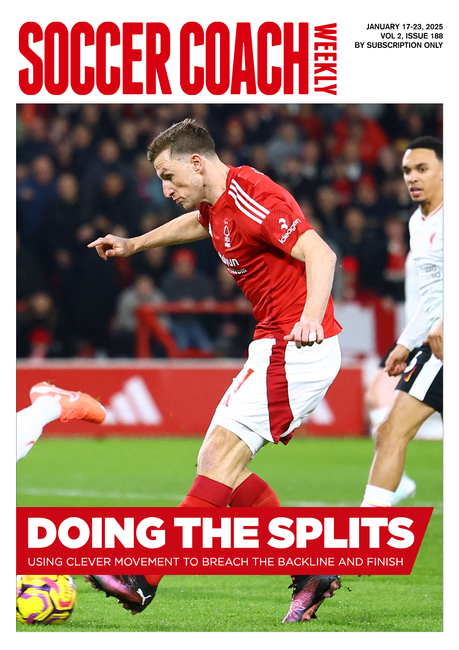Pod-by-pod go forward
In the multi-phase game, it is essential forwards are used in small groups. Each group wins the next breakdown in turn, avoiding aimless shifting from one ruck to the next. These groups are called “pods”. This session develops a pod system.
Warm up time: 5-7
Session time: 7-10
Development time: 10-15
Game time: 10-15
Warm down time: 5-7
What to think about
Pods need to time their runs to meet the pass at full pace. Players should use “triggers” to begin their runs based on the movements of the scrum half before he passes. For instance, he might bend his knees before he passes. Pods are aimed at producing quick ball to disorganise defences. Three quick phases with the pods should be sufficient otherwise players may not be able to get back into position quick enough. However, your set plays should mix the number of phases pods are used for. Your team should be flexible enough to allow the ball to be passed if there are gaps in the defence.set-up
- In your “pod” (group), beat the defence in front of you first and then recycle the ball.
- As the supporting pod, run around the back of the breakdown with enough depth to take a pass moving forward.
- Communicate to your team mates where you are and what you are going to do.
What you get your players to do
Split your forwards into two pods of three plus one player to act as scrum half (9). Start the two pods together at the side of at least three gates of cones. The 9 pops the ball to a player in pod 1. This pod runs through the nearest gate, presents the ball for 9 to pass to pod 2 which is arcing around to attack the second gate. Repeat for pod 1 to attack through the third gate and then start gain. Keep the exercise slow to make it more realistic (see picture 1).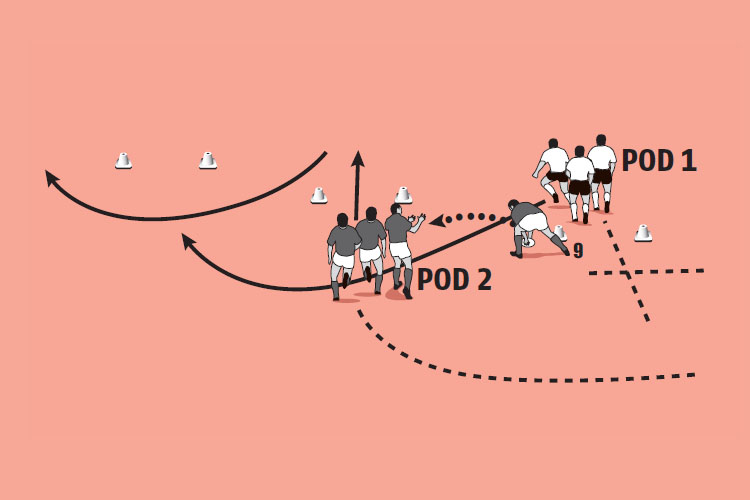
Development
Make each pod go to ground as it goes through the gate, with the ball carrier being protected by the two others in the pod. Add a player with a ruck pad at each gate to add some resistance. Add another player in defence without a ruck pad at each gate to compete for the ball on the ground.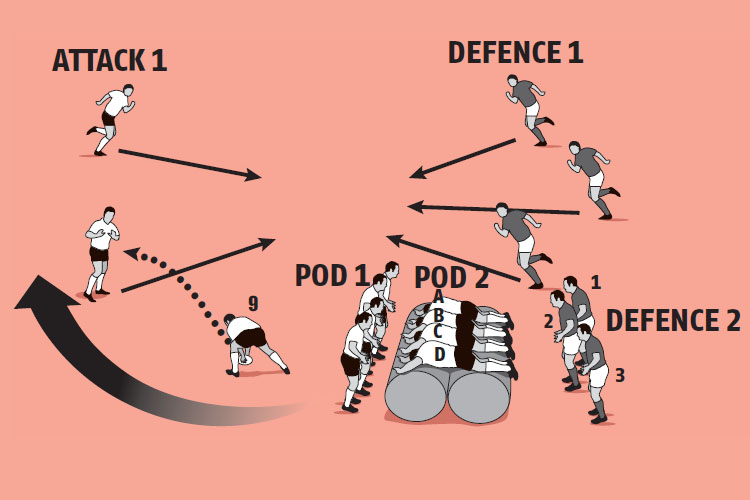
Game situation
Split your team into two – eight attacking forwards in two pods of four along with a scrum half, fly half and a centre, against six to eight defenders.- Pod 2 lies on top of two tackle bags. Pod 1 stands in a scrummage position in front of the bags. Defence 1 and 2 get ready, with defence 2 looking to defend against pod 2. The scrum half passes to attack 1 who drive into defence 1 (see picture 2).
- Pod 1 joins the ruck while pod 2 arcs round to take the next pass once the ball has been won (see picture 3). Build your pod attacks from these situations.
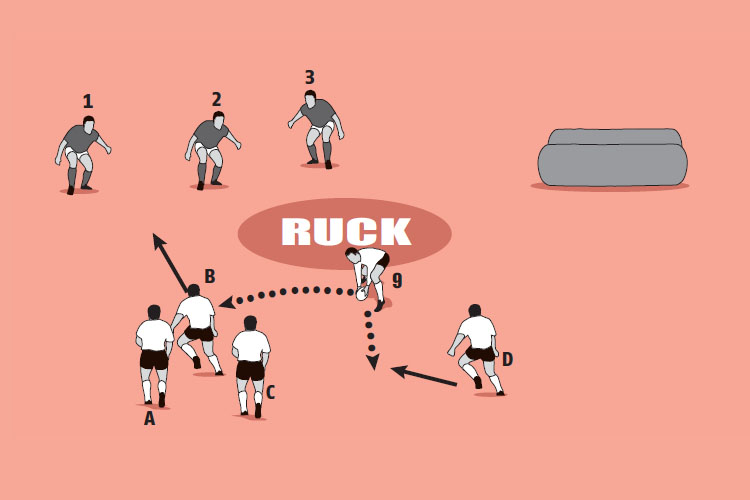
What to call out
- “Change angles to attack the gate”
- “Supporters: Tell the ball carrier what to do”
- “Use triggers to time your run”
Newsletter Sign Up
Coaches Testimonials

Gerald Kearney, Downtown Las Vegas Soccer Club

Paul Butler, Florida, USA

Rick Shields, Springboro, USA

Tony Green, Pierrefonds Titans, Quebec, Canada
Subscribe Today
Be a more effective, more successful rugby coach
In a recent survey 89% of subscribers said Rugby Coach Weekly makes them more confident, 91% said Rugby Coach Weekly makes them a more effective coach and 93% said Rugby Coach Weekly makes them more inspired.
Get Weekly Inspiration
All the latest techniques and approaches
Rugby Coach Weekly offers proven and easy to use rugby drills, coaching sessions, practice plans, small-sided games, warm-ups, training tips and advice.
We've been at the cutting edge of rugby coaching since we launched in 2005, creating resources for the grassroots youth coach, following best practice from around the world and insights from the professional game.


